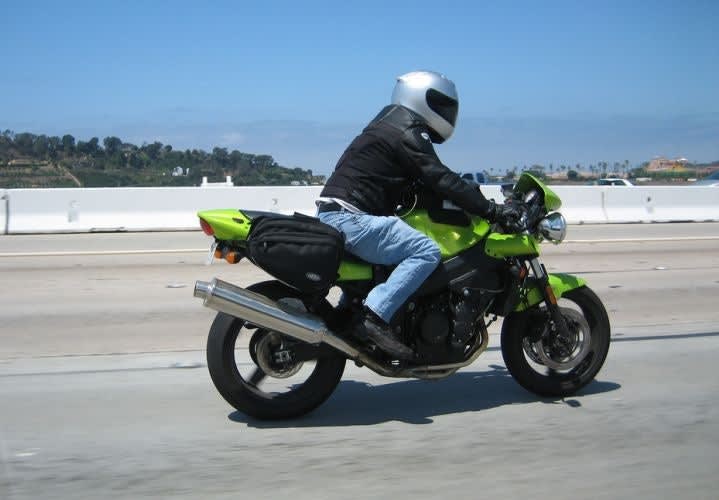Every motor officer can tell you stories about pursuits of other bikes, and the successes and mistakes made. We learn from others, and share those stories to keep our brothers and sisters safe. Here are a few thoughts that may help you.
First and foremost, prepare yourself mentally to put public safety first. Before you get on your bike each day, tell yourself that you will let "him" get away. "Him" is the motorcyclist violator whose initial violation was speeding, but who then drives more recklessly to evade you. Recognizing when to disengage from such a pursuit is a sign of a mature, experienced motor officer who knows another speeder will come by your spot in a few minutes and you will have another chance to chase down that scofflaw. Remind yourself of this fact each day and commit to it.
I found my best success in chasing down motorcyclist violators came from appearing out of thin air behind them, lights on and clearly in a position to stay with them. This was easiest when I observed them at speed traveling in the same direction on a freeway. Using other vehicles, landscaping, and speed to hide my approach, I could appear suddenly behind them, leaving them the feeling that there was no escape.
Be a "motor ninja." Be like the wind, everywhere and nowhere all at the same time. You want the scofflaw to have this experience: Five seconds ago they were happily tearing up the streets, and now all they see in their mirror is flashing lights and your sunglasses.
To catch these violators, coordination is critical. Remember your radio and use it to get other assets in place when necessary. Having a motor officer ahead of you, ready to assist can also be a deterrent to a pursuit. Or if it goes to a chase, another motor officer can start calling the pursuit while you just stick with the vehicle. Either way, talk to your partners or other motors around you. Discuss as a group how you can help each other stay safe while chasing down the bad guy.













